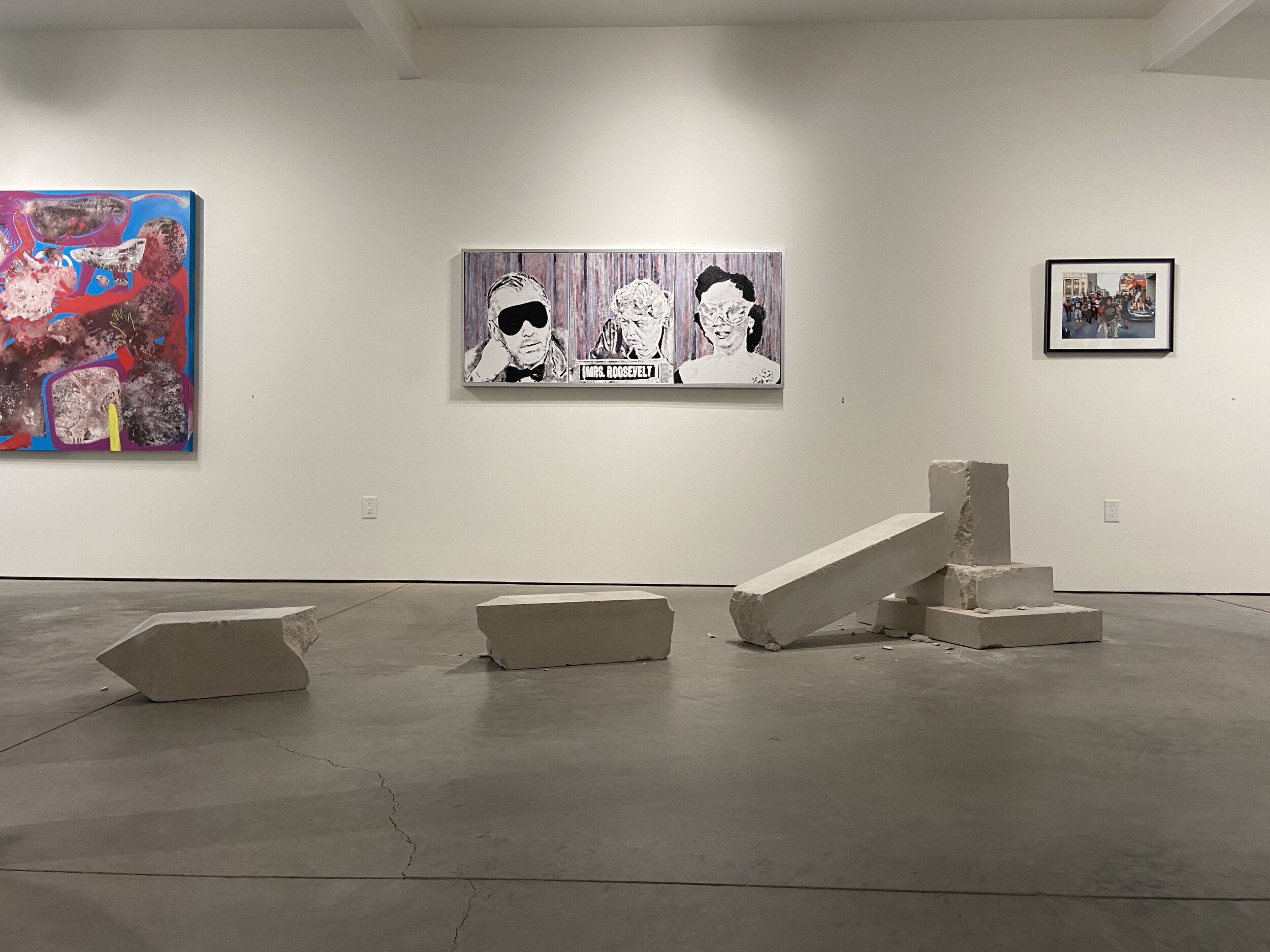Cultural memory is not just written in history books or drafted in policy documents - it is a lived, everyday experience.
The limestone monument is a proposal for a likely rejected abstract* monument for the National Garden for American Heroes, taken from the Executive Order on Building and Rebuilding Monuments to American Heroes, signed by Donald J. Trump on July 3, 2020.
In many ways the monument is a mirror to the current state of affairs in the year 2020 (at the time of this writing) 207,000 American lives have been lost due to the Federal Administration’s handling of COVID-19, we have seen the largest organized actions across the US since the Civil Rights era. Cities and towns across the US have stood against police brutality and it’s continued violence towards black bodies. In large part, brought on by the death and police sanctioned killing of Breonna Taylor, and the failure of our current Law system to uphold justice.
This is not the first time this federal administration has stoked the flames of a cultural war. In early February 2020, a draft Executive Order of “Make Federal Buildings Great Again” surfaced, preferring *classical architectural styles - Euro-American style. A week before the Executive Order on the National Garden for American Heroes was announced, the Federal Administration released the EO on Protecting American Monuments, Memorials, and Statues and Combating Recent Criminal Violence which allows the federal government to prosecute to the fullest extent permitted under Federal law any person or any entity that destroys, damages, vandalizes, or desecrates a monument, memorial, or statue within the United States.
Against the backdrop of a 100-year global pandemic and the restructuring and revising of our public memory and spaces in many communities across the US, this distinct set of executive orders are not just passive declarations or empty promises of a politician. These are doctrines for white supremacists ideologies to redefine the meaning of citizenship and identity in the built environment.
Further Reading by the Artist:
My work straddles the line between imagined destruction and the exploration of something beautiful that can come out of reimagining memorials, monuments, and public grounds/spaces. Beauty is hardly a feeling that represents the trauma involved in our history and the subsequent reimagining of such spaces. I do believe that destructive actions are necessary and things being broken can bring closure. Spolia (Latin for spoils) is an ancient practice that carried symbolic and spiritual value. Builders would lay a statue on its side in order to place it and the power it represents under control. This way of repurposing building stone and or decorative sculpture was a widespread practice in the creation of new monuments, buildings, and memorials.
“statues are silent teachers” was made in response to an open call titled “We All Declare For Liberty: 2020 and the Future of American Citizenship,” an exhibition at Quappi Projects in Louisville, Kentucky.
Special thanks to Lucas Brown and Brownsmith Studios. Images and copy editing by Emily Miles.
*(iv) All statues in the National Garden should be lifelike or realistic representations of the persons they depict, not abstract or modernist representations.

